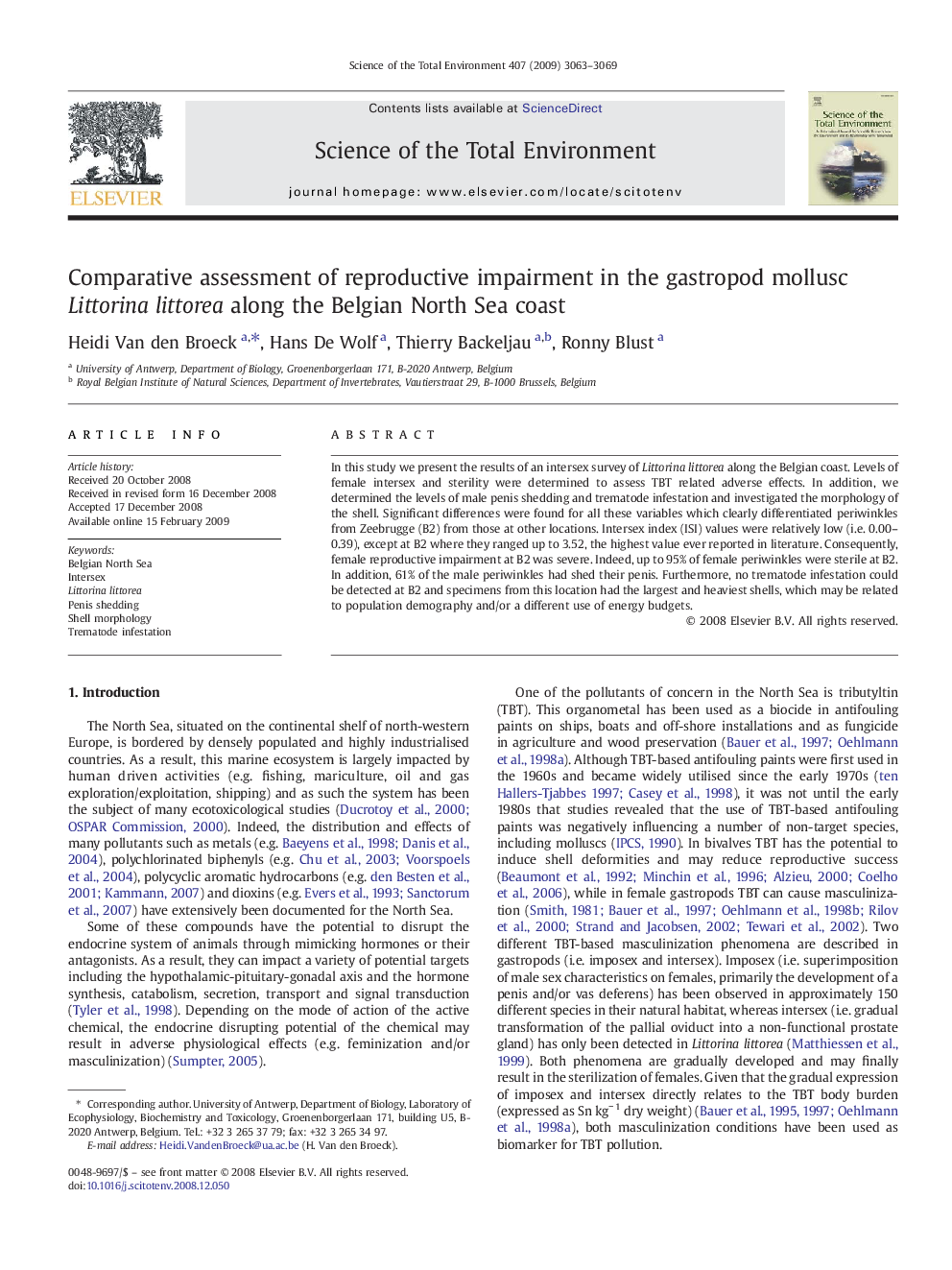| Article ID | Journal | Published Year | Pages | File Type |
|---|---|---|---|---|
| 4431994 | Science of The Total Environment | 2009 | 7 Pages |
In this study we present the results of an intersex survey of Littorina littorea along the Belgian coast. Levels of female intersex and sterility were determined to assess TBT related adverse effects. In addition, we determined the levels of male penis shedding and trematode infestation and investigated the morphology of the shell. Significant differences were found for all these variables which clearly differentiated periwinkles from Zeebrugge (B2) from those at other locations. Intersex index (ISI) values were relatively low (i.e. 0.00–0.39), except at B2 where they ranged up to 3.52, the highest value ever reported in literature. Consequently, female reproductive impairment at B2 was severe. Indeed, up to 95% of female periwinkles were sterile at B2. In addition, 61% of the male periwinkles had shed their penis. Furthermore, no trematode infestation could be detected at B2 and specimens from this location had the largest and heaviest shells, which may be related to population demography and/or a different use of energy budgets.
